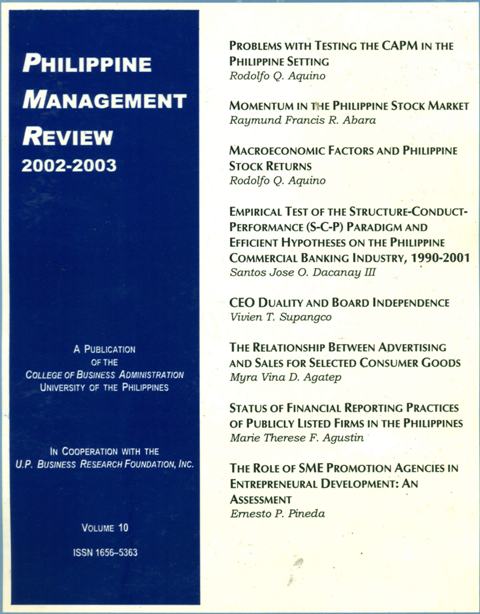Empirical Test of the Structure-Conduct-Performance (S-C-P) Paradigm and Efficient Structure Hypothesis on the Philippine Commercial Banking Industry, 1990-2001
Abstract
This paper validates the structure-conduct-performance (S-C-P) paradigm and the efficient structure (relative efficiency) hypothesis by estimating the banks’ profit function that takes both market share and concentration measure. Drawing on Philippine bank-specific and industry-level data from 1990 to 2001, this paper provides evidence that market share positively influences banks’ profitability while industry concentration is not significant in determining the banks’ profit function. Market share, though, is not entirely due to differential efficiency, as regulation-driven mergers preserved the rankings and profit levels of the top banks. Profitability is also positively and significantly explained by the banks’ capital asset and demand deposit-to-total deposit ratios, and the growth of the market deposit level. The data support the general finding in the literature that banks do not have scale economies. The study, though, finds that banks have scope economies, proxied by the banks’ ability to engage in universal banking activities as opposed to plain commercial banking functions. Foreign bank entry is also not significant in affecting profit, but the Asian financial crisis did, albeit with slight significance.
